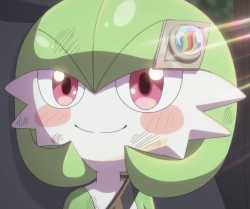>>58503508Being a mere pet clashes with what was shown of her in the short.
-- The "Sapient Being" Portrayal (The Positive) --
Agency and Personality: Making her a co-star with her own thoughts, reactions, and decisions moves her far beyond being a simple tool or pet. She has her own will.
Heroic Sacrifice: By consciously choosing to risk her life for her trainer, the narrative frames her as a moral agent. She isn't acting on instinct; she's making a calculated, selfless choice based on loyalty and love. This aligns perfectly with her species' Pokédex entries.
Narrative Contrast: The direct comparison to the self-serving Pokémon who cause the crash and flee makes her actions even more noble. It positions her on a higher intellectual and ethical plane. She is not just a "beast"; she is a guardian.
This side of the portrayal treats her as a person in a symbiotic partnership with her Trainer.
-- The "Simplistic Beast" Portrayal (The Negative) --
Then there's the dog bed.
The Symbolism of the Dog Bed: This isn't just a quirky, cute detail. In visual storytelling, every element is a choice. The dog bed explicitly places her in the role of a pet, a domesticated animal. It undermines the very sapience the rest of the short worked so hard to establish.
Cognitive Dissonance: It sends mixed messages. Is she a respected sapient partner? Or is she a creature that belongs on a pet bed on the floor? The latter choice reduces her to an object of ownership, not a partner.
-- Navigating the Mixed Messages --
So why would the creators do this? There are a few possibilities, and none are mutually exclusive:
1. Lazy shorthand for "Cute and Domestic": The animators might have simply reached for a quick, visual trope to signify "this Pokémon is a beloved part of the household." In many cultures, a pet bed is the immediate symbol for a cherished non-human family member. They may not have fully considered the implications for a creature established as highly intelligent.
(1/2)

